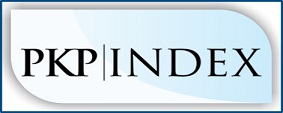Penalaran Matematika: Apa Aspek Sentralnya?
Abstract
Pengembangan penalaran matematis siswa merupakan tujuan dari kurikulum pendidikan Indonesia dan beberapa kurikulum diluar negeri. Tapi terdiri dari apa penalaran matematika tidak selalu jelas, secara umum setiap orang memiliki pengertian tentang penalaran matematikanya sendiri. Metode yang digunakan dalam artikel ini adalah literature review. Artikel ini bertujuan untuk memperjelas aspek-aspek penalaran matematika dari perspektif teoritis, dengan mengelaborasi artikel-artikel penalaran matematika sehingga berkontribusi pada penelitian selanjutnya. Untuk mencapai elaborasi tersebut, dilakukan pencarian literatur dengan kata kunci penalaran matematika, pemikiran matematis, penalaran deduktif, penalaran induktif dan sebagainya. Dari analisis literatur penelitian pendidikan matematika tentang penalaran matematika, sintesis yang dilakukan mengarah pada aspek penalaran matematika. Langkah literature review adalah: pertama, memilih artikel dengan kata kunci penalaran matematika dan kata kunci lain yang terkait dengan penalaran. Kedua, dilakukan penganalisaan literatur. Ketiga, melakukan sintesis untuk menyoroti konvergensi, divergensi, dan untuk menunjukkan area di mana terdapat kesenjangan teoritis yang perlu diisi oleh model apapun yang dapat mewakili aspek sentrak penalaran. Pada akhir proses dilakukan analisis 25 artikel Aspek yang diuraikan disini, terdiri dari dua aspek utama: aspek struktural dan aspek proses, yang keduanya diperlukan untuk menangkap karakterisitik sentral dari penalaran matematika. Aspek struktur dari penalaran terdiri dari langkah deduktif, langkah induktif dan langkah abduktif. Sedangkan, aspek proses penalaran matematis terdiri dari proses yang berhubungan dengan pencarian persamaan dan perbedaan dan proses yang terkait dengan validasi.
Downloads
References
Bernard, M., & Chotimah, S. (2018). Improve student mathematical reasoning ability with open-ended approach using VBA for powerpoint. AIP Conference Proceedings, 2014(September).
Cañadas, M. C., Deulofeu, J., Figueiras, L., Reid, D., & Yevdokimov, O. (2007). The Conjecturing Process: Perspectives in Theory and Implications in Practice. Journal of Teaching and Learning, 5(1).
Creswell, J. W. (2003). Research Design: Qualitative, Quantitative, and Mixed methods approaches. In Sage Publication.
De Villiers, M. (1999). The role and function of proof with Sketchpad. Rethinking Proof with the Geometer’s Sketchpad, 24, 17–24. http://academic.sun.ac.za/education/mathematics/MALATI/Files/proof.pdf
Duval, R. (1995). Sémiosis et pensée humaine: registres sémiotiques et apprentissages intellectuels. In Berne: Peter Lang.
Grouws, D. A. (2006). Handbook of research on mathematics teaching and learning: A Project of the National Council of Teacher of Mathematics. Mathematics Teaching, 6179(619), 1-60.
Hanna, G., & Jahnke, H. N. (1996). Chapter 23 : Proof and Proving. Journal for Research in Mathematics Education, 22, 390–408.
Harel, G. Sowder, L. (2007). Toward comprehensive perspectives on the learning and teaching of proof. Second handbook of research on mathematics teaching and learning, 2, 805-842
Jeannotte, D., & Kieran, C. (2017). A conceptual model of mathematical reasoning for school mathematics. Educational Studies in Mathematics, 96(1), 1-16.
Lithner, J. (2006). A framework for analysing creative and imitative mathematical reasoning. Educational Studies in Mathematics, 67, 255–276.
Maher, C. A. (2009). Children’s reasoning: Discovering the idea of mathematical proof. In Teaching and Learning Proof Across the Grades: A K-16 Perspective (pp. 120–132). New York: Routledge.
Mariotti, M. A. (2006). Proof and proving in mathematics education. In Handbook of research on the psychology of mathematics education (pp. 173-204). Brill Sense
Mason, J, Burton, L., & Stacey, K. (2010). Thinking Mathematically Second Edition. Pearson Higher Ed.
Mason, John. (2001). Questions about Mathematical Reasoning and proof in Schools ( Opening Address To QCA Conference Oct 2001 ). Opening Address To QCA Conference UK, 1685, 1–11.
Meyer, M. (2010). Abduction-A logical view for investigating and initiating processes of discovering mathematical coherences. Educational Studies in Mathematics, 74(2), 185–205.
NCTM. (2000). Principles and standards for school mathematics. Reston,VA: NCTM, 1–22.
OCDE. (2006). Compétences en sciences , lecture et mathématiques. Le Cadre d’évaluation de PISA 2006. Paris: OCDE.
Pedemonte, B., & Reid, D. (2011). The role of abduction in proving processes. Educational Studies in Mathematics, 76(3), 281–303.
Peirce, C. S. (2016). Prolegomena to a science of reasoning: Phaneroscopy, semeiotic, logic.. Peter Lang.
Reid, D.A, Knipping, C. (2010). Proof in Mathematics Education. Research, Learning and Teaching. Sense Publishers, Rotterdam/Boston/Taipei, 10, 179–192.
Reid, D. A. (2003). Forms and uses of abduction. Proceedings of the 3th Conference of the European Society in Mathematics Education, 1–10.
Rivera, F. D. (2008). On the Pitfalls of Abduction: Compolicities and Complexities in Patterning Activity. For the Learning of Mathematics, 28(1), 17–25.
Sfard, A. (2012). Introduction: Developing mathematical discourse-Some insights from communicational research. International Journal of Educational Research, 51–52, 1–9.
Sfard, A. (2008). Thinking as communicating: Human development, the growth of discourses, and mathematizing. Cambridge University Press
Simon, M. A. (1996). Beyond inductive and deductive reasoning: The search for a sense of knowing. Educational Studies in mathematics, 30(2), 197-210.
Stylianides, G. J. (2008). An Analytic Framework Of Reasoning-And-Proving. For the Learning of Mathematics, 28(1), 9-16. Retrieved December 9, 2020, from http://www.jstor.org/stable/40248592
Shuttleworth, M (Sep 16, 2009). What is a Literature Review?. Retrieved Des 04, 2020 from Explorable.com: https://explorable.com/what-is-a-literature-review
Toulmin, S. E. (2003). The uses of argument (Updated edition, first published in 1958). Cambridge University Press.
Van der Maren, J.-M. (1996). Méthodes de recherche pour l’éducation. Méthodes En Sciences Humaines, 502.
Yackel, E., & Hanna, G. (2003). Reasoning and proof. A Research Companion to Principles and Standards for School Mathematics, 227–236.
Copyright (c) 2021 Rosida Marasabessy, Aan Hasanah

This work is licensed under a Creative Commons Attribution-ShareAlike 4.0 International License.



1.jpg)














